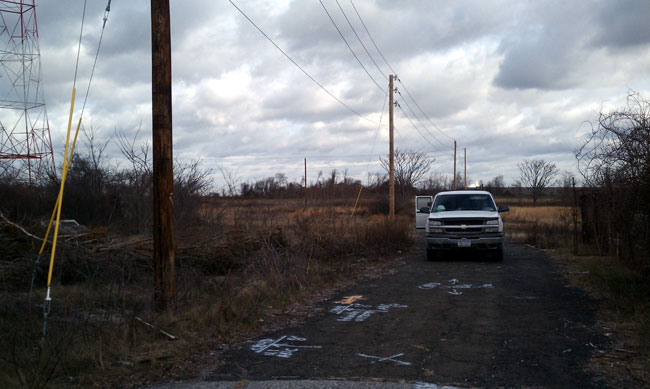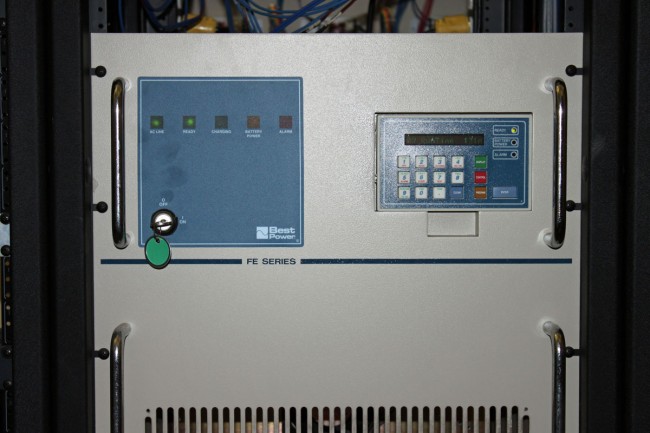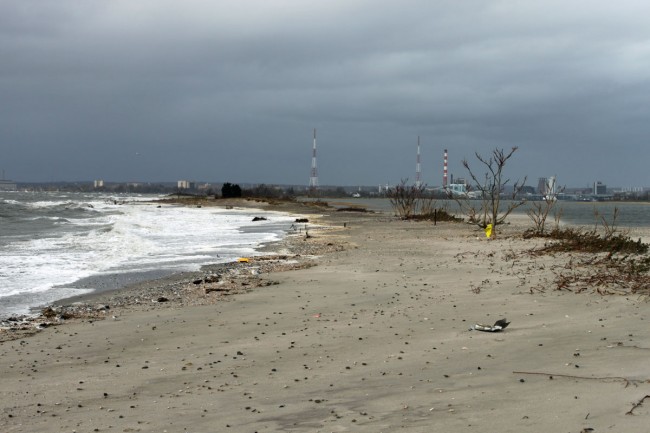The big lesson learned from Sandy is to take nothing for granted. For several days prior to the storm’s arrival, we checked everything; refueled and started every generator, checked the oil, water, and battery electrolyte, set up fuel deliveries ahead of time for the worst-case scenario, checked all the backup transmitters and STL’s, and so on. The one thing that I didn’t consider was a storm surge so high that the propane tank would float away. After all, those tanks are heavy.
However, a brief examination of elementary physics reveals that even when full, a propane tank will float:
One gallon of water weighs 8.3 pounds if it is freshwater or approximately 8.55 pounds for saltwater (depending on where it is from).
One gallon of liquid propane weighs approximately 4.1 pounds, thus it is about half as dense as water.
Most propane tanks are not full, being at most 80% liquid volume. It is always the thing that you didn’t think of.
We seem to be suffering a 500-year storm about once a year or so around these parts. I expect that things will only get worse. With that in mind, it is perhaps time to re-think our disaster preparedness and recovery plans to incorporate every worst-case scenario we can imagine. Everyone knows, but it bears repeating: Radio is the last link that people have when all other technology fails. Thus, when it comes to storm preparation, there is no such thing as too much. Thus:
- Secure everything
- Assume nothing
- Take nothing for granted
Our assumptions about power utility and telephone network reliability and restoration may be wrong. Our assumptions about access to remote sites, our ability to use vehicles, availability of gasoline and other fuels may be over-optimistic. Our assumptions that basic foodstuffs, clean water, and secure resting areas may also be wrong. Get those items wrong and it does not matter how much equipment redundancy is built into facilities.
For remote transmitter sites, access can be a major problem after a storm. In low-lying coastal areas, flooding will be an issue. In those situations, having backup transmitter sites would be a key feature of any disaster plan.
All good disaster plans also have the human component; clean water, food, and safe, secure resting areas for the staff. As always, when the SHTF and there are no options and no ideas, there is the Bear Grylls survival method:

Which we really, really don’t want to do (from the TV show Man vs. Wild on Discovery).






Correction: “One gallon of liquid propane weighs approximately 4.1 gallons”
I think you meant to say “One gallon of liquid propane weighs approximately 4.1 pounds”
Back to your original premise. You still have to bound the problem. If you assume worst case, then everything in the area has been wiped out and there’s no need for a recovery plan. No one else is left. But if you say, “500 year storm every year, which means we have to incorporate X into our plans (“X” = “bolting propane tanks to a solid concrete slab to ensure the whole thing won’t float” or “bolting tanks to a special platform that cannot move in the X-Y direction, but can raise and lower; hence, it will float if water starts to rise.”), then you’re onto something, in my opinion.
For WICC maybe one huge secured to a pad type propane tank would be a better alternative to several small tubes. Bolted and strapped to a good size pad a full tank
might have a good chance of staying in place.
A large tank will stay in place, and it will require a propane truck to come out to the site to fill it. The site is hard enough to get to with a boat. That’s why they have multiple small tanks: they can be taken to a filling station and brought back. But as Paul discovered, this ease of refilling means they can also float away during a storm.
@Gary, thanks, I think I was a little tired when I typed that post. In my worst case scenario plans, some people tend to survive… Perhaps I am an optimist?
@Chris/Bob, the area is not accessible with normal vehicles. In special circumstances, we can sometimes get a 4 wheel ATV or something similar, otherwise we have to take a boat over and carry stuff from the dock, which is 4/10 of a mile from the transmitter building. Hence the 100 lbs propane tanks are the largest size that can be transported that way. It is a pain. However, from a pure technical standpoint, it is an ideal AM transmitter site, out on an island surrounded by salt water and directional right into downtown city of license.